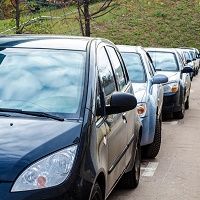Human Drivers Wary of, Outperformed by, Self-Parking Cars
When it comes to parking, American's don't like giving up control.

When it comes to parking, American’s don’t like giving up control.
That’s the gist of a new survey from AAA, which found only 1 in 4 Americans would trust their cars to parallel park themselves.
Many new car models feature “self-parking” technology that allows vehicles to park themselves without the aid — or interference – of their human drivers. AAA found the self-parking technology out-performed unassisted human drivers, yet the auto club’s survey found 80% of drivers were perfectly satisfied with their own, human, parallel parking abilities.
“While the vast majority of Americans say they would not trust self-parking technology, AAA found these features performed well in tests and warrant consideration of new car buyers,” said John Nielsen, AAA’s managing director of engineering and repair.
AAA and the Automobile Club of Southern California’s Automotive Research Center looked at five vehicles with self-parking technology: the 2015 Lincoln MKC, the 2015 Mercedes-Benz ML 400, the 2015 Cadillac CTS-V Sport, the 2015 BMW i3, and the 2015 Jeep Cherokee Limited.
They found cars using self-parking technology had 81% fewer curb strikes and used 47% fewer maneuvers. Self-parking cars were also about 10% faster at parallel parking, compared to their human counterparts.
However, AAA did offer humans one compliment. The tests found self-parking systems tend to park cars about 37% closer than human drivers. That’s not always a good thing.
“AAA recommends that drivers leave six to eight inches between the vehicle and the curb when parallel parking,” Nielsen said. “With some systems leaving as little as a half-inch buffer, AAA urges automakers to increase this distance to prevent vehicle damage.”